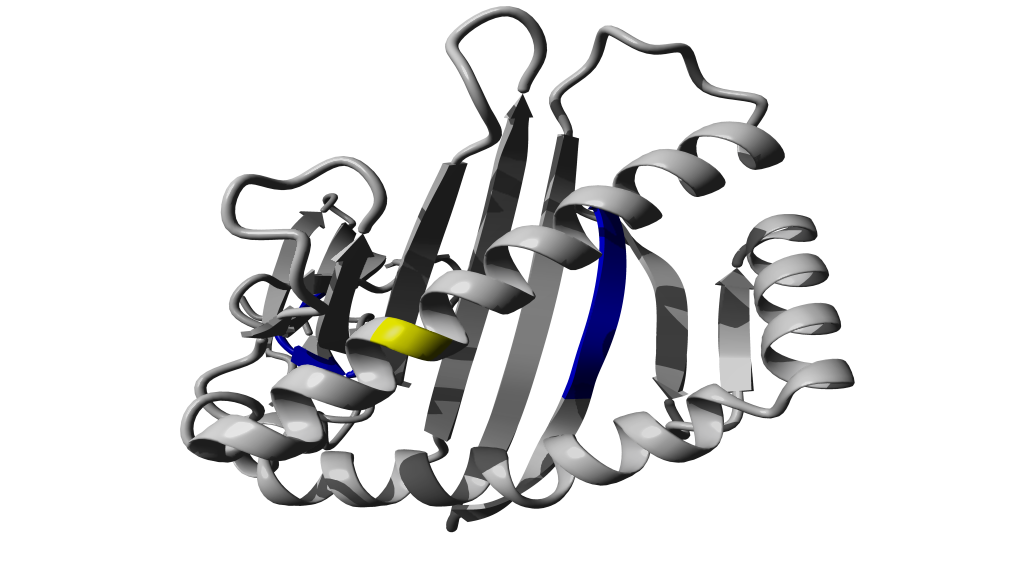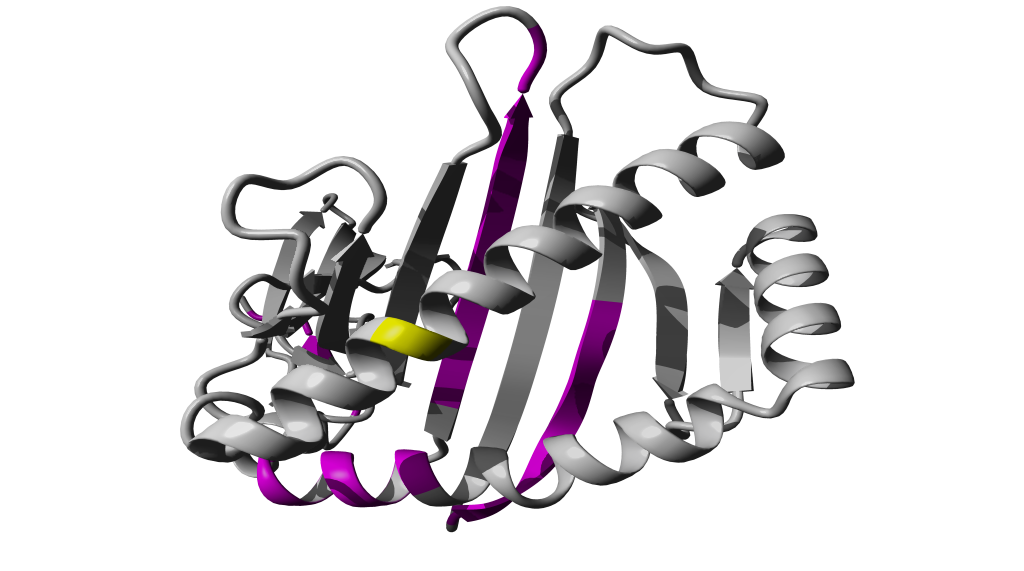| Compact overview of VAR_056307 | |||||||||||||
|---|---|---|---|---|---|---|---|---|---|---|---|---|---|
| UniProt ID | Gene | Mutation | Mutation type | Disease | OMIM | dbSNP | |||||||
| 1A69_HUMAN | HLA-A | R89G | Polymorphism | - | No OMIM entry | rs1059459 | |||||||
| Short stretch summary of VAR_056307 | ||||
|---|---|---|---|---|
| Predictor | Predicted regions overview | Comparison to WT | Stretches in variant | Stretches in WT |
| Tango |  | -1 No change | 5 | 5 |
| Waltz |  | 0 No change | 2 | 2 |
| Limbo |  | 0 No change | 5 | 5 |
| Domain composition of 1A69_HUMAN | ||||
| Database | Domain composition | Residue details | ||
| PFAM |  | MHC_I (Residues 25-203), C1-set (Residues 212-295), MHC_I_C (Residues 336-364) | ||
| SMART |  | IGc1 (Residues 222-293) | ||
| Structure stability summary of VAR_056307 | ||||
|---|---|---|---|---|
| Variant | Stability change | Effect | Structure | Stability frequency histogram |
| R89G | 1.11 kcal/mol | Reduced stability |  |  |
TANGO aggregation
| Graphical comparison of TANGO regions in variant and wild type | |||
|---|---|---|---|
| Protein | Predicted regions overview | TANGO regions | Total score |
| Variant |  | 5 | 2930 |
| Wild type |  | 5 | 2931 |
| TANGO regions in wild type and variant | |||||
|---|---|---|---|---|---|
| Wild type TANGO regions | |||||
| N-term gatekeepers | TANGO region | C-term gatekeepers | Start | End | Score |
| VMAPR | TLVLLLSGALALT | QTWAG | 8 | 20 | 51 |
| RGEPR | FIAVGYV | DDTQF | 46 | 52 | 77 |
| FYPAE | ITLTW | QRDGE | 237 | 241 | 13 |
| GTFQK | WAAVV | VPSGQ | 268 | 272 | 11 |
| QPTIP | IVGIIAGLVLFGAVITGAVVAAVMW | RRKSS | 308 | 332 | 63 |
| Variant protein TANGO regions | |||||
| N-term gatekeepers | TANGO region | C-term gatekeepers | Start | End | Score |
| VMAPR | TLVLLLSGALALT | QTWAG | 8 | 20 | 51 |
| RGEPR | FIAVGYV | DDTQF | 46 | 52 | 77 |
| FYPAE | ITLTW | QRDGE | 237 | 241 | 13 |
| GTFQK | WAAVV | VPSGQ | 268 | 272 | 10 |
| QPTIP | IVGIIAGLVLFGAVITGAVVAAVMW | RRKSS | 308 | 332 | 63 |
| Difference in TANGO aggregation between wild type and variant | |
|---|---|
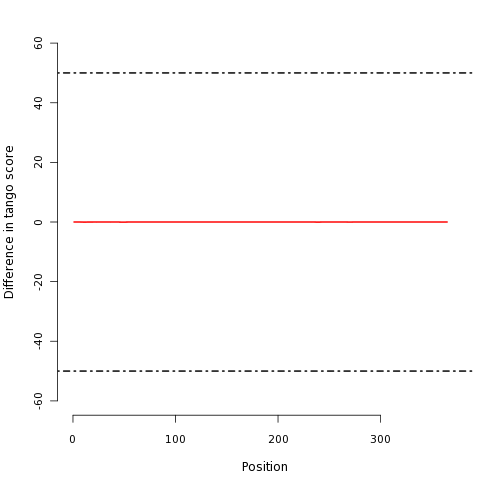 | This graph plots the per-residue TANGO aggregation score difference between the wild type protein and this variant. |
| TANGO aggregation profile score plot | |
|---|---|
 | This graph plots the per-residue TANGO aggregation score of the variant protein. From left to right, all residue scores from the N-terminus to the C-terminus are plotted |
WALTZ amylogenicity
| Graphical comparison of WALTZ regions in variant and wild type | |||
|---|---|---|---|
| Protein | Predicted regions overview | WALTZ regions | Total score |
| Variant |  | 2 | 184 |
| Wild type |  | 2 | 184 |
| WALTZ regions in wild type and variant | |||||
|---|---|---|---|---|---|
| Wild type WALTZ regions | |||||
| N-term gatekeepers | WALTZ region | C-term gatekeepers | Start | End | Score |
| FLRGY | HQYAYD | GKDYI | 138 | 143 | 22 |
| TLRCW | ALSFYP | AEITL | 229 | 234 | 6 |
| Variant protein WALTZ regions | |||||
| N-term gatekeepers | WALTZ region | C-term gatekeepers | Start | End | Score |
| FLRGY | HQYAYD | GKDYI | 138 | 143 | 22 |
| TLRCW | ALSFYP | AEITL | 229 | 234 | 6 |
| Difference in WALTZ amylogenicity between wild type and variant | |
|---|---|
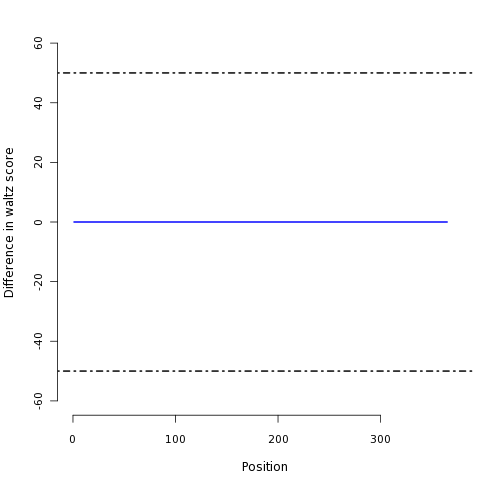 | This graph plots the per-residue WALTZ amylogenic score difference between the wild type protein and this variant. |
| WALTZ amylogenic profile score plot | |
|---|---|
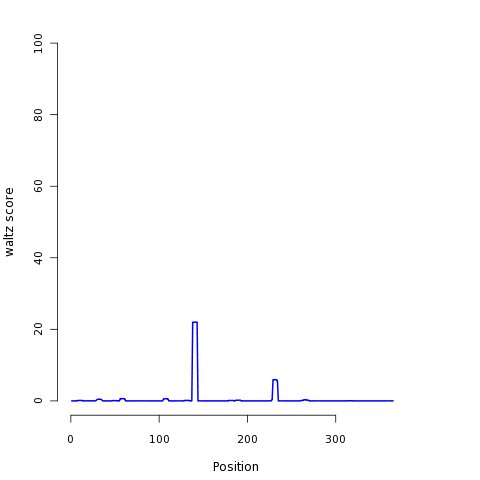 | This graph plots the per-residue WALTZ amylogenic score of the variant protein. From left to right, all residue scores from the N-terminus to the C-terminus are plotted |
LIMBO chaperone binding
| Graphical comparison of LIMBO regions in variant and wild type | |||
|---|---|---|---|
| Protein | Predicted regions overview | LIMBO regions | Total score |
| Variant |  | 5 | 3189 |
| Wild type |  | 5 | 3189 |
| LIMBO regions in wild type and variant | |||||
|---|---|---|---|---|---|
| Wild type LIMBO regions | |||||
| N-term gatekeepers | WALTZ region | C-term gatekeepers | Start | End | Score |
| MAPRT | LVLLLSGA | LALTQ | 9 | 16 | 100 |
| VGSDW | RFLRGYHQ | YAYDG | 132 | 139 | 66 |
| TCVEW | LRRYLENG | KETLQ | 192 | 199 | 87 |
| FYPAE | ITLTWQRD | GEDQT | 237 | 244 | 46 |
| GLPKP | LTLRWEPS | SQPTI | 294 | 301 | 98 |
| Variant protein LIMBO regions | |||||
| N-term gatekeepers | WALTZ region | C-term gatekeepers | Start | End | Score |
| MAPRT | LVLLLSGA | LALTQ | 9 | 16 | 100 |
| VGSDW | RFLRGYHQ | YAYDG | 132 | 139 | 66 |
| TCVEW | LRRYLENG | KETLQ | 192 | 199 | 87 |
| FYPAE | ITLTWQRD | GEDQT | 237 | 244 | 46 |
| GLPKP | LTLRWEPS | SQPTI | 294 | 301 | 98 |
| Difference in LIMBO chaperone binding between wild type and variant | |
|---|---|
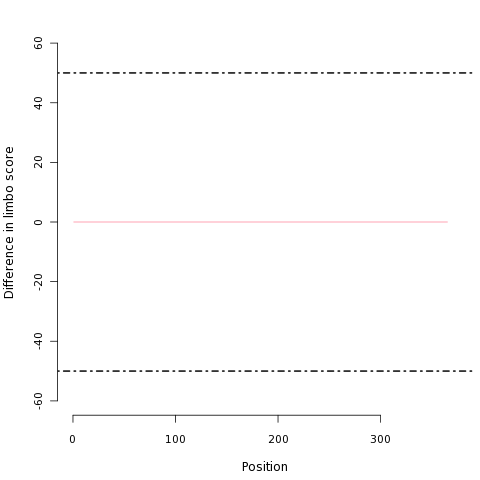 | This graph plots the per-residue LIMBO chaperone binding difference between the wild type protein and this variant. |
| LIMBO chaperone binding score plot | |
|---|---|
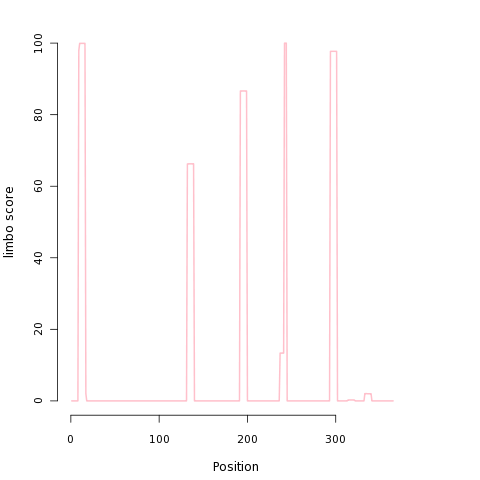 | This graph plots the per-residue LIMBO chaperone binding score of the variant protein. From left to right, all residue scores from the N-terminus to the C-terminus are plotted |
FOLDX structural profile
Functional sites, structural features and cellular processing
| Functional sites and structural features | |
|---|---|
| Feature | This residue |
| Catalytic site | No |
| Secondary structure | No secondary structure information available |
| Transmembrane topology | No TM regions in this protein |
| Cellular processing | |
|---|---|
| Feature | Affected by variant |
| Signal peptide | No |
| Farnesylation anchor | No |
| N-Myristoylation anchor | No |
| Geranylgeranyl transferase Type 1 anchor | No |
| Geranylgeranyl transferase Type 2 anchor | No |
| Glycosylphosphatidylinositol (GPI) anchor | No |
| Peroxisomal targeting signal PTS1 | No |
| Subcellular location | No |
All mutations from 1A69_HUMAN
3 mutations listed
| Variant | UniProt ID | Mutation | Disease | Mutation Type | dTANGO | dWALTZ | dLIMBO | ddG |
|---|---|---|---|---|---|---|---|---|
| VAR_056308 | 1A69_HUMAN | Q94H | - | Polymorphism | 0 | 0 | 0 | -0.55 |
| VAR_056307 | 1A69_HUMAN | R89G | - | Polymorphism | -1 | 0 | 0 | 1.11 |
| VAR_056309 | 1A69_HUMAN | D101N | - | Polymorphism | 0 | 0 | 0 | -2.04 |



